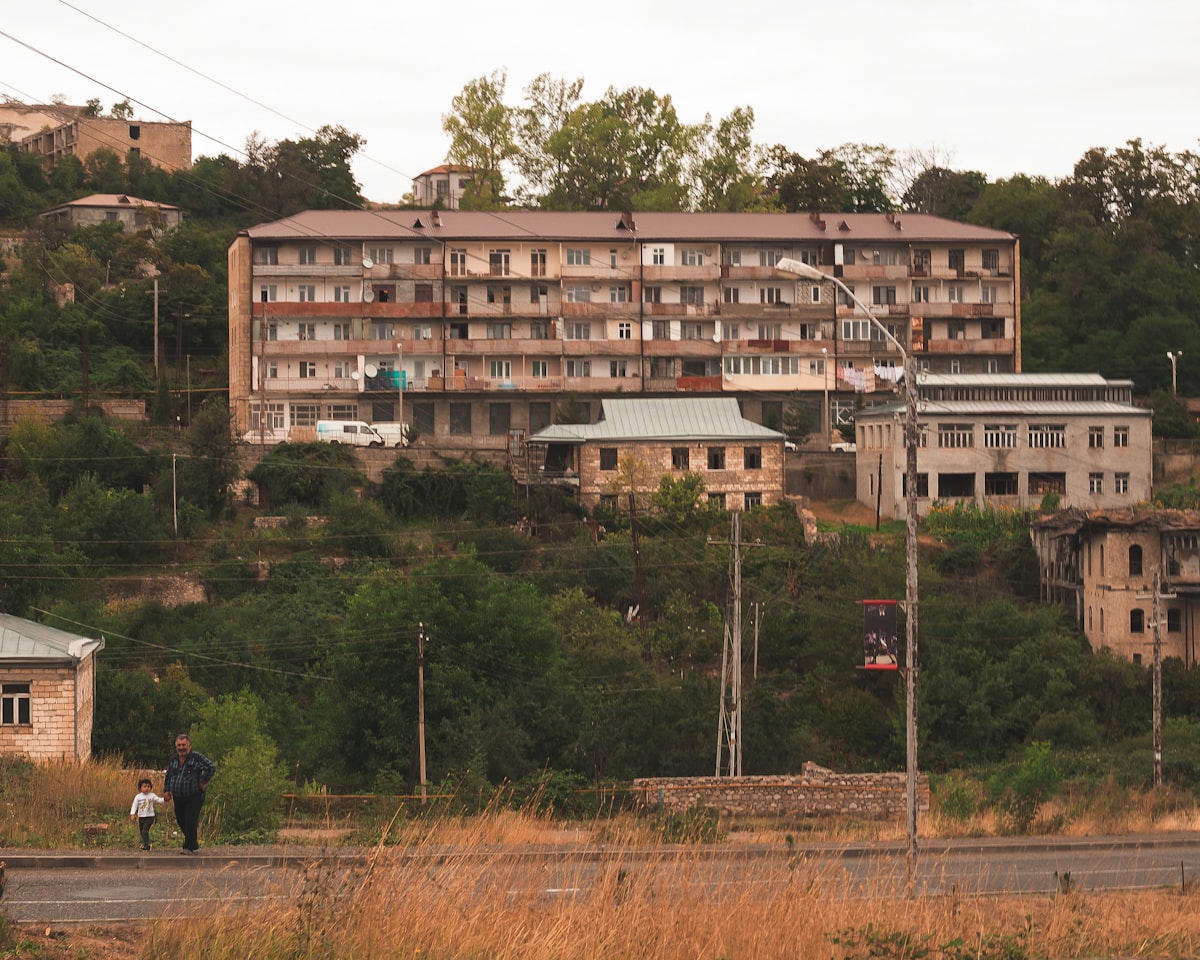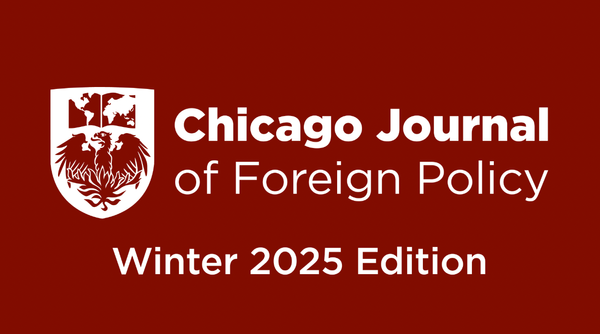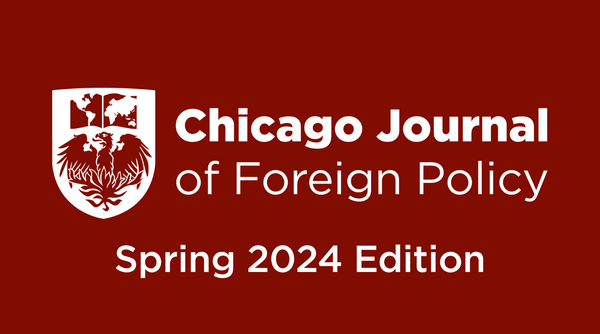The Forgotten Conflict

By Francisco Gutierrez, University of Chicago
The 2020s can unfortunately be considered a time of immense strife: the University of Chicago’s own Doomsday clock has inched us closer and closer to midnight, or global catastrophe. As of this year, we stand only 90 seconds from midnight. This is due in part to a variety of conflicts reigniting and tensions flaming worldwide with notable conflicts such as Israel and Palestine, Russia and Ukraine, and the possibility of war between China and Taiwan firmly in public view. But, lost in the recent chaos is an intense, ethnic conflict in the Caucasus region that represents yet another chess piece to global superpowers: Armenia and Azerbaijan. In this article, I am going to discuss the history of the various disputes as well as how the dissolution of the Soviet Union set into motion the events of today’s Armenian-Azerbaijani conflict. Then I will delve into how the conflict has shaped regional alliances and the way in which regional players are attempting to utilize this conflict to their advantage.
Firstly, it is important to discuss the history of Armenian-Azerbaijani conflict. While the history between Armenia and Azerbaijan spans hundreds of years, the current conflict’s origins can be traced towards the end of the twentieth century. The strife between the two states is mainly over the Nagorno-Karabakh Region, or The Republic of Artsakh, a mountainous area now located in southeastern Azerbaijan. This swath of land was originally a part of the Azerbaijan Soviet Socialist Republic within the USSR. However, in 1988, with the Soviet Union facing impending dissolution, the Armenian majority in Artsakh voted in favor joining Armenia through their regional soviet, or legislature.[1] Of course Azerbaijan, eyeing its own statehood in the near future, rejected the soviet’s vote. This vote, along with a near unanimous public referendum in the region to separate from Azerbaijan, led to a disastrous full-scale conflict known as the First Nagorno-Karabakh War. Lasting until 1994, the war claimed tens of thousands of lives on both sides and created even more refugees.[2] Officially ending in a ceasefire, the First Nagorno-Karabakh War represented a much greater victory to Armenia–although the terms of the Russian-sponsored Bishkek Protocol considered the region to be de-facto independent, the territory was indeed under Armenian control culturally, militarily, and politically for the next few decades.[3]
This status quo largely remained in the years between the First Nagorno-Karabakh War and the next full-scale war in 2020. Attempts for a more formal peace occurred in 2006, with the Minsk Group, spearheaded by the United States, Russia, and France. While the two sides vowed to maintain a dialogue with the intent on reaching a solution, no concrete peace deal was reached.[4] However, there were a few minor skirmishes, with a 2016 incident known as the Four Day War resulting in the Azerbaijani seizure of two “Armenian” villages, demonstrating the shifting of the scales militarily towards Azerbaijan.
The origins of the Second Nagorno-Karabakh are quite unclear, given that each side accused the other of initiating the full-scale war. During the summer of 2020, both sides had engaged in artillery barrages and mortar attacks along their shared border.[5] The Armenian government alleges that Azerbaijan had been plotting a full-scale invasion for a long time, and finally started to carry it out on September 27, after it was announced by their Ministry of Defense. Azerbaijan’s government has countered that they were retaliating to Armenian incursions, such as the one to retake the village of Mosves near the border, viewing their offensive as an attempt to liberate those living under the Armenian yoke. The Second Nagorno-Karabakh War, dubbed the 44 Day War, was a brief conflict, but a decisive one. With a consistently aggressive rocket and artillery campaign, along with drone shipments from Armenian-adversary Turkey, Azerbaijan shattered the Armenian defense, destroying their tanks and defensive equipment. The successful offensive, under President Ilham Aliyev, represented a massive victory for Azerbaijan. The larger, wealthier, and better equipped Azerbaijani army fairly easily circumvented the Armenian anti-missile attack apparati. The Azerbaijani victory was secured without difficulty as a result of their claiming of the Aras Valley, and then the shutting of the Lachin Corridor in the south–which is the only connection between Armenia and Artsakh.
In an analysis of the war, Lt. Col. Edward J. Erickson explains its strategic importance: “The corridor contains a single, all-weather, southwest-to-northeast road that runs from the town of Lachin bordering Armenia to Stepanakert; it is the only major road between Armenia and Karabakh. Assuming that one controls the Aras Valley, possession of the Lachin corridor (or the ability to interdict the corridor) effectively blocks the entry of goods into Artsakh itself.”[6] Another desire for Azerbaijan that warrants discussion is the addition of the hypothetical Zangezur Corridor, that would connect mainland Azerbaijan with their Nakhchivan province to the west and its neighbor Turkey (currently, one would have to pass through the Armenian province of Syunik to travel there), though this has not yet been realized.[7] While not presently in effect, it also informs the reader on Azerbaijan's bigger goal to weaken and subdue Armenia and Artsakh.
The latest ceasefire, brokered again by Russia, granted the return of most of the territory that Azerbaijan lost in the first war. Perhaps the most interesting term from this agreement is that Russian peacekeepers would now be stationed on the Lachin Corridor, monitoring Armenian access to Artsakh. Armenian troops withdrew from the region, and Azerbaijan either annexed or indirectly began to control a majority of the territory. It is under this historical backdrop that contextualizes the current Nagorno-Karabakh Conflict.
While there have been minor skirmishes in the intermittent years, and Azerbaijan initiated a notable blockade of the Lachin Corridor in 2022, the newest round of fighting did not begin until later the following year. With Russia increasingly less able to focus its attention on the Caucasus region with the struggle in Ukraine intensifying, Azerbaijan inched closer and closer to conflict, until they finally launched another offensive against resistant Armenian forces in Artsakh on September 19, 2023 that lasted for a day until the latest ceasefire was agreed. This ceasefire would culminate with approximately one week of negotiations about what the future of the region would entail. It also ended Artakh president Samvel Shahramanyan’s rule, marking the dissolution of The Republic of Artsakh into Azerbaijan effective beginning in 2024.
A major humanitarian consequence of Azerbaijani control is that around 100,000 ethnic Armenians living in the region have evacuated their homes, out of fear of Azerbaijani retribution.[8] While President Aliyev has claimed that the ethnic Armenians’ rights will not be infringed, it is evident that the Armenians did not agree, instead uprooting their entire lives and making a break for Armenia.[9] Currently, the future remains uncertain. Peace talks have been slow, while the establishment of the Zanzgheur Corridor dominates local headlines. While Azerbaijan views the corridor’s establishment as an economic boon for all (including Armenia), Armenia believes the corridor to be an infringement upon their national sovereignty.
With both the history of the conflict and its present-day realities being laid out, I would now like to examine the state of alliances, and what I believe each country has to gain or lose from the Armenian-Azerbaijani conflict.
Israel:
The current Armenian-Azerbaijani conflict provided an interesting array of possibilities for Israel, with the nation not having any clear cut ties in either direction: Israel had historically maintained relatively cordial relations with both nations. However, Israel has bolstered its ties with Azerbaijan by providing military weaponry such as intelligence and tactical drones that proved effective in their recent triumphs over Armenian forces.[10] Israel’s support of Azerbaijan has reaped incredible benefits: the nation, embattled in its own conflict with neighboring Palestine, has purchased approximately 40% of its oil from Azerbaijan, allowing the nation to diversify its oil imports for the relatively small price of providing weapons. Israel’s moves in the region can also be seen as a power play against Iran, their longtime adversary. Their relationship with Azerbaijan, also an adversary of Iran, serves to represent a classic case of “the enemy of my enemy is my friend” phenomenon. Through establishing an alliance with an ascending Azerbaijan that possesses significant capacity in the oil market, this inherently weakens Iran’s position as an oil producer and lender, one of their key exports. Thus, it seems as though Israel, without a clear ideological or traditional obligation to either side, has deftly navigated the Armenian-Azerbaijani conflict through its newfound commitment to Azerbaijan’s war effort which has also enabled its efforts to compete against Iran. This partnership also represents a break with their traditional close ally in the United States, further demonstrating how the conflict in the Caucasus is an area where traditional alliances do not apply.
Turkey:
Turkey’s stance on the Armenian-Azerbaijani conflict is perhaps the most clear-cut, with the nation providing assistance for the Azerbaijani effort in the form of conducting joint military exercises since 1992, supplying their own TB2 drones, and providing assurances that it would unconditionally aid Azerbaijan if it were threatened.[11] Turkey’s major role in the conflict is a large reason Azerbaijan has gained authority of the Nagorno-Karabakh region, while other powerful nations like Russia and the United States are playing much more passive roles in the Caucasus. Turkey’s support of Azerbaijan can be clearly explained, as relations with Armenia remain incredibly strained as a result of the Turkish government’s refusal to acknowledge the mass, systematic killings of Armenian men, women, and children during the First World War. However, Turkey’s support of Azerbaijan is not limited to their disdain for Armenia: it is also a result of a strategic, regional alliance with Azerbaijan. With the proposed creation of the Zangezur Corridor advancing in recent days, Turkey also appears poised to reap benefits–in providing a clearer path to Azerbaijan, Turkey will no longer need to travel through Iran to reach their ally, streamlining trade between the two nations.[12] Passing through the Turkish region of Kars, the nation will experience direct economic benefits that come with possessing stops along what would be the primary trade vessel of the Caucasus region.
Russia:
Russia, largely remaining neutral in the Nagorno-Karabakh wars through sponsoring ceasefire talks on multiple occasions, is perhaps the greatest representation of the changing nature of alliances over the past few decades. Russia has historically been among Armenia’s staunchest supporters, viewing itself as the protector of Christian Orthodox nations. Furthermore, the two nations had extensive military and economic ties even after the dissolution of the Soviet Union in 1991. Armenia was a member of the Collective Security Treaty Organization, which is a Russian-led defensive alliance. However, despite the fact that peacekeepers were stationed in Artsakh and Armenia following the second Nagorno-Karabakh war, they did not prevent the full-scale offensive launched by Azerbaijan. This occurred for a few reasons. Firstly, Russia is occupied with their invasion of Ukraine, and can no longer devote the same degree of time, money, and weapons towards the Caucuses. Another reason is that in 2018, a series of peaceful demonstrations known as the Velvet Revolution led to the ousting of pro-Russian president Serzh Sargsyan and the ascension of the pro-Western leader Nikol Pashinyan.[13] Also, this has prompted Armenians now to question Russian support and increasingly welcome the support of Western nations like the United States. Azerbaijan, on the other hand, took advantage of Russian weakness to respond to the conflict, and has instead used the chance to maintain a relationship with the state as they face mountains of sanctions from the West as a result of the war in Ukraine.[14] Azerbaijan even supplied Russia with eggs when they faced a shortage at the end of 2023. Overall, this conflict represents Russia’s decreasing power as a provider of security for regional allies which has created space for Azerbaijani aggression.
USA:
Influenced by shifting allegiances, the United States has moved towards Armenia. Previous presidential administrations such as Bush and Obama had held greater sympathies for Azerbaijan, as they blamed Armenia for funneling weapons to Iran that ended up killing Americans.[15] Nonetheless, the United States largely maintained a neutral stance, attempting to broker peace with Armenia and Azerbaijan in 2006 with the Minsk Group along with Russia, highlighting a common area of agreement with one of their greatest rivals. However, with the arrival of a pro-Western leader in Pashinyan, the United States found it easier to support the Armenian cause, providing diplomatic aid, and pledging to support Armenia. The United States President Aliyev even called out the Biden administration for their vocal opposition to Azerbaijani aggression: “the latest statements and actions taken by the US have seriously damaged Azerbaijan-US relations.”[16] Perhaps the most telling sign of the strength of Armenian and American relations is that President Pashinyan sought to have peace talks with Azerbaijan in the United States after the most recent conflict ended at the end of 2023. Overall, the United States has emerged in the vacuum left by Russian abandonment of the Armenian cause.
Iran:
Iran has approached the Armenian-Azerbaijani conflict from a defensive point of view. With Turkey and Azerbaijan threatening Iran’s status as a oil lender, this has led Iran to lend their support to Christian Armenia as opposed to the Muslim Azerbaijan, demonstrating the ability of this conflict to transcend not only traditional alliances but also religious solidarity. Iran views itself as a victim of the Zangezur Corridor initiative, as the corridor would disrupt their monopoly on trade coming from the Nakhchivan and western neighbors such as Turkey to the rest of Azerbaijan. Furthermore, this project would cut Iran off from Armenia completely and shut Armenia off from perhaps their biggest ally in the region.[17] In addition, the construction of the Nakhchivan pipeline (scheduled to be completed this year) between Turkey and its largest oil supplier from Nakhchivan would diminish reliance on Iran for their biggest export and sideline them in regional discussions. Yet, due in large part to Russian ambivalence, Iran is hamstrung in the extent to which they can retaliate against Azerbaijan.[18] Thus, Iran has taken its course of action largely to preserve its own status as a power broker and fears losing influence in Western Asia.
The Armenian-Azerbaijani conflict serves as yet another representation of the violence and bloodshed that has engulfed the global system in recent years. Furthermore, the conflict of the Nagorno-Karabakh region represents yet another ethnic conflict that appears to be interminable, with a state of a ceasefire usually constituting the best case scenario at a given moment. Additionally, the current situation in the Caucuses also demonstrates the fickle nature of long-term alliances, representing opportunities for nations to promote their own militaristic, economic, and political interests while stifling their enemies at the same time. While Azerbaijan has gained the upper hand for now, it would not surprise me if Armenia turns the tables in the near future as Russia’s situation weakens against the West. But, most importantly, one must be aware of the occurrence of violent wars such as between Armenia and Azerbaijan, as the presence of larger, more widely-covered conflicts can not distract from the real-world, humanitarian crises for everyday people that result in the wake of the destruction brought about by fighting.
Works Cited:
[1]Patricia Carley, “Nagorno-Karabakh: Searching for a Solution”, United States Institute of Peace (Fall 1998).
[2]Carley, “Searching for a Solution”.
[3]Center For Preventative Action, “Nagorno-Karabakh Conflict”, Council on Foreign Relations (Winter 2024).
[4]ReliefWeb, “OSCE Minsk Group Co-Chairs Urge Armenia and Azerbaijan to Prepare Their Respective Publics ‘for Peace, Not for War’”, United Nations Office for the Coordination of Humanitarian Affairs (Winter 2006).
[5]Edward J. Erickson, “The 44-Day War in Nagorno-Karabakh”, Army University Press (Summer 2021).
[6]Erickson, “The 44-Day War”.
[7]Mathieu Droin, et al, “A Renewed Nagorno-Karabakh Conflict: Reading between the Front Lines”, Center for Strategic & International Studies (Fall 2023).
[8]Kirill Krivosheev, “Landmark Armenia-Azerbaijan Peace Treaty Inches Closer”, Carnegie Endowment for International Peace (Winter 2024).
[9]Christian Edwards, “Azerbaijan Has Reclaimed Nagorno-Karabakh. What Does That Mean for the Tens of Thousands Living There?”, CNN (Fall 2023).
[10]Isabel Debre, “Israeli Arms Helped Azerbaijan Retake Nagorno-Karabakh, to the Dismay of Armenians”, Los Angeles Times (Fall 2023)
[11]AlJazeera.com, “Turkey Supports ‘steps Taken by Azerbaijan’ in Nagorno-Karabakh: Erdogan”, Al Jazeera (Fall 2023).
[12]Fatih Yurtsever, “Who Benefits Geopolitically from the Establishment of the Zangezur Corridor?” Turkish Minute (Summer 2023)
[13]Simon Hoellerbauer, “Armenia and the Velvet Revolution: The Merits and Flaws of a Protest-Based Civil Society”, Foreign Policy Research Institute (Winter 2019).
[14]Sheila Paylan, “Why Deepening Russia-Azerbaijan Ties Should Worry the United States” Atlantic Council (Summer 2023).
[15]Eli Lake, “Wikileaks: Armenia Sent Iran Arms Used to Kill U.S. Troops.” The Washington Times (Fall 2010)
[16]TimesofIndia.com, “Azerbaijan’s President Ilham Aliyev Scolds US Secretary of State Antony Blinken over US Backing for Armenia” The Times of India (Fall 2023)
[17]Agence France-Presse, “Iran Says It Opposes ‘geopolitical Changes’ in Caucasus” Voice of America (Fall 2023)
[18]Elis Gjevori, “What Are the Implications of Azerbaijan’s Victory over Armenia for Iran?” Middle East Eye (Fall 2023)





